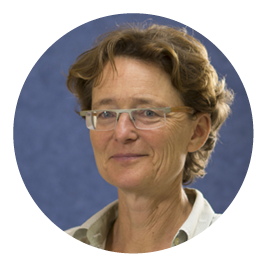Ilse Aben
SRON Netherlands Insitute for Space Research , Netherlands
- Conference: Methane
- Presentation: Methane leakages from localised sources detected from space using TROPOMI
- Presentation Time: Thursday


Ilse Aben is the co-Principal Investigator for the TROPOMI instrument on ESA's Sentinel-5 Precursor mission.
Reducing methane emissions is crucial to mitigate climate change in the near term. One of the main anthropogenic methane sources is from the fossil fuel (oil, gas, coal) industry, and reducing leakages from this sector is a potential win-win situation as the CH4 leakages also represent an economic loss to industry. However, in order to reduce methane emissions we need to know where the large(s) sources are worldwide. Quite some research has been performed recently -particularly in the US- to try to better quantify and localise methane emissions from -in particular- the O&G industry. So far these efforts usually consist of measurements done during a certain limited time period and from a global perspective only cover a small fraction of the potential sources. Performing CH4 measurements using a space-based platform is potentially very advantageous as it observes worldwide. However, the requirements for such measurements are very challenging as the emissions occur at the surface and from space one observes a total column of CH4 which is in large part determined by the background CH4 concentrations. Nonetheless, detection of CH4 emissions from large O&G point sources was demonstrated using the space-based SCIAMACHY and GOSAT observations. However these instruments have their limitations for the detection of localised point sources of methane, either because of their limited sensitivity, spatial resolution or their spatial coverage.
In October 2017 the TROPOMI instrument onboard the Sentinel-5 precursor satellite was launched by ESA. TROPOMI is a collaboration between the Netherlands and ESA. The instrument represents the next step in measuring the atmospheric composition from space. It has unprecedented high spatial resolution (7x7 km2 for CH4) combined with daily global coverage and low measurement noise.
In this presentation we will show a few CH4 local sources observed with TROPOMI including preliminary estimates of their emissions. These local sources include emissions from wetlands, emissions from Oil and Gas basins, and a major accidental well blowout at a Gas & Oil facility. The latter leakage, which lasted almost 3 weeks, was to - our knowledge - not 'observed' through any other atmospheric measurement thereby highlighting the importance of the space based observations by TROPOMI to detect such accidental leakages.